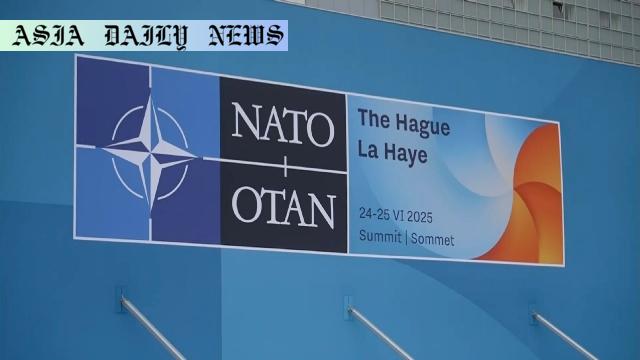NATO Summit: Trump calls for increased defense spending and avoids clear commitment to NATO’s article five.
- NATO Summit sees Trump pressing for higher defense spending among member states.
- Trump’s ambiguous stance on NATO’s article five raises concerns.
- Possibility of Trump and Zelenskyy meeting, signaling ongoing Ukraine crisis.

Introduction: Trump’s High-Stakes NATO Summit
US President Donald Trump’s attendance at the NATO summit in the Netherlands underscores a pivotal moment in international relations. His call for member states to increase their defense spending to 5% of GDP reignites a longstanding debate over shared responsibility and fairness in global security alliances. With NATO considered the cornerstone of Western collective security, Trump’s demands not only challenge the status quo but also raise questions about Washington’s commitment to the alliance’s foundational principles.
Trump’s Stance on Defense Spending
Central to Trump’s NATO agenda is the issue of defense spending. He has long criticized European allies for what he perceives as overreliance on the United States for defense. By demanding an increase to 5% of GDP, Trump highlights a disparity in contributions, arguing it undermines equitable burden-sharing. While some NATO members, like Germany and France, are taking steps to increase military expenditures, others fall short of meeting even the 2% target set by the alliance. Trump’s bold assertions could alienate key allies, but they also reflect a recurring theme in his foreign policy—prioritizing American interests and reducing financial obligations abroad.
Article Five: A Question of Commitment
During the summit, Trump’s ambiguity about NATO’s article five—collective defense—sparked concern among allied nations. When pressed by reporters, he gave a vague answer, stating that it “depends on your definition.” Article five has only been invoked once in the alliance’s history, following the September 11 attacks, and any hesitation or ambiguity from the US on its commitment could weaken NATO’s deterrent power. Critics argue that Trump’s rhetoric undermines confidence among member states, especially smaller European nations that depend heavily on collective security agreements for protection against potential aggressors.
Potential Meeting with Zelenskyy amid Ukraine Crisis
On the sidelines of the NATO summit, Trump hinted at a potential meeting with Ukrainian President Volodymyr Zelenskyy. While he downplayed the significance of the encounter, stating he would ask Zelenskyy “How you doing?”, the ongoing conflict in Ukraine looms large. As a nation enduring Russian aggression, Ukraine relies heavily on Western support. Trump’s previous actions—such as controversial military aid decisions—add layers of complexity to US-Ukraine relations. A brief meeting could serve as an opportunity to reaffirm American support or reflect ongoing challenges in aligning long-term U.S. and NATO strategies toward Russian aggression in the region.
Global Implications and Post-Summit Outlook
Trump’s approach to NATO reflects broader themes in his foreign policy: prioritizing American interests, reassessing international commitments, and challenging multilateral norms. While some allies might interpret his stance as a wake-up call to invest more in their defense capabilities, others view it as an existential threat to NATO’s unity and legitimacy. The summit’s outcome will likely test the alliance’s ability to adapt to shifting dynamics while maintaining cohesion. As the world watches, NATO faces a defining moment in its history, tasked with preserving its relevance and effectiveness amidst growing geopolitical uncertainties.



Commentary
The Significance of NATO under Trump
President Trump’s approach to this NATO summit reflects his broader worldview, one that prioritizes unilateral action and transactional relationships over traditional alliances. By urging allies to increase defense spending and hinting at conditional support for article five, he underscores the growing shift in U.S. foreign policy towards a more isolationist stance. While his push for greater burden-sharing resonates with some American taxpayers, it raises grave questions about the long-term viability of collective security frameworks like NATO.
Defense Spending: A Justifiable Concern?
Trump’s call for NATO members to allocate 5% of their GDP to defense merits a closer examination. While the argument for equitable contribution is valid, achieving such a target is economically challenging for many nations, particularly those facing budget constraints. Additionally, NATO is not solely about financial contributions; it represents strategic collaboration and shared values that transcend monetary calculations. By framing the issue in numerical terms, Trump’s rhetoric risks oversimplifying the complexities of alliance funding and collective defense preparedness.
Russia, Ukraine, and the Future of NATO
In light of Russia’s continued aggression towards Ukraine, NATO’s solidarity is more vital than ever. Trump’s potential meeting with Zelenskyy on the sidelines of the summit will be closely watched globally. Ukraine’s situation is a stark reminder of the risks posed by a fragmented NATO—divisions within the alliance could embolden adversaries like Russia to exploit perceived weaknesses. Therefore, strengthening transatlantic unity should remain a priority, even as the US seeks to recalibrate its role within the alliance.
Final Thoughts
Ultimately, Trump’s NATO approach embodies the tensions between pragmatism and principle. While his focus on fairness and burden-sharing reflects valid concerns, his ambiguous stance on article five and potential alienation of allies could undermine the very fabric of the alliance. As NATO navigates these challenges, member states must find ways to address legitimate grievances without compromising the shared mission of safeguarding peace and stability in an increasingly volatile world.